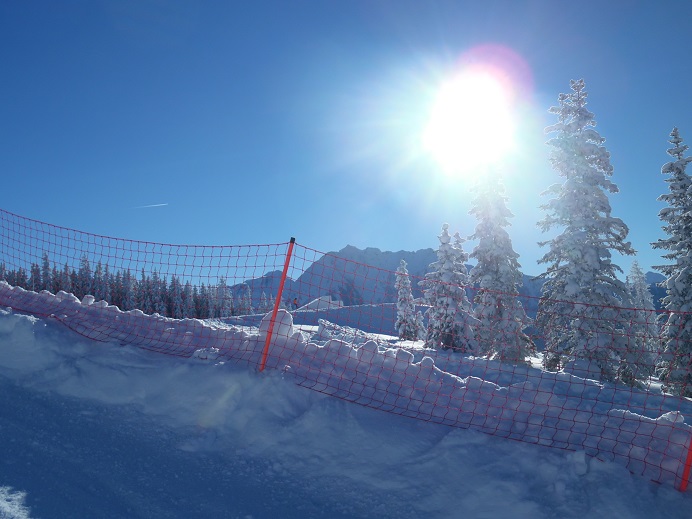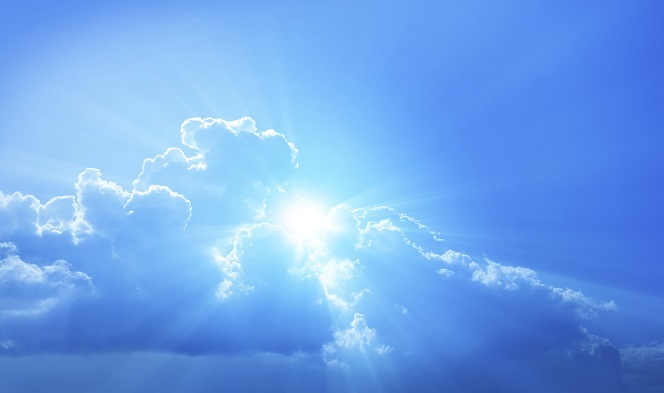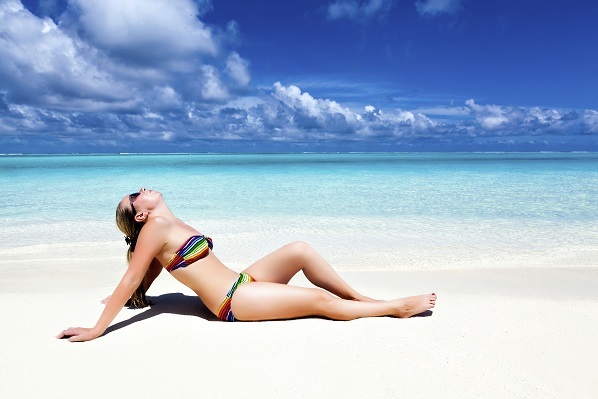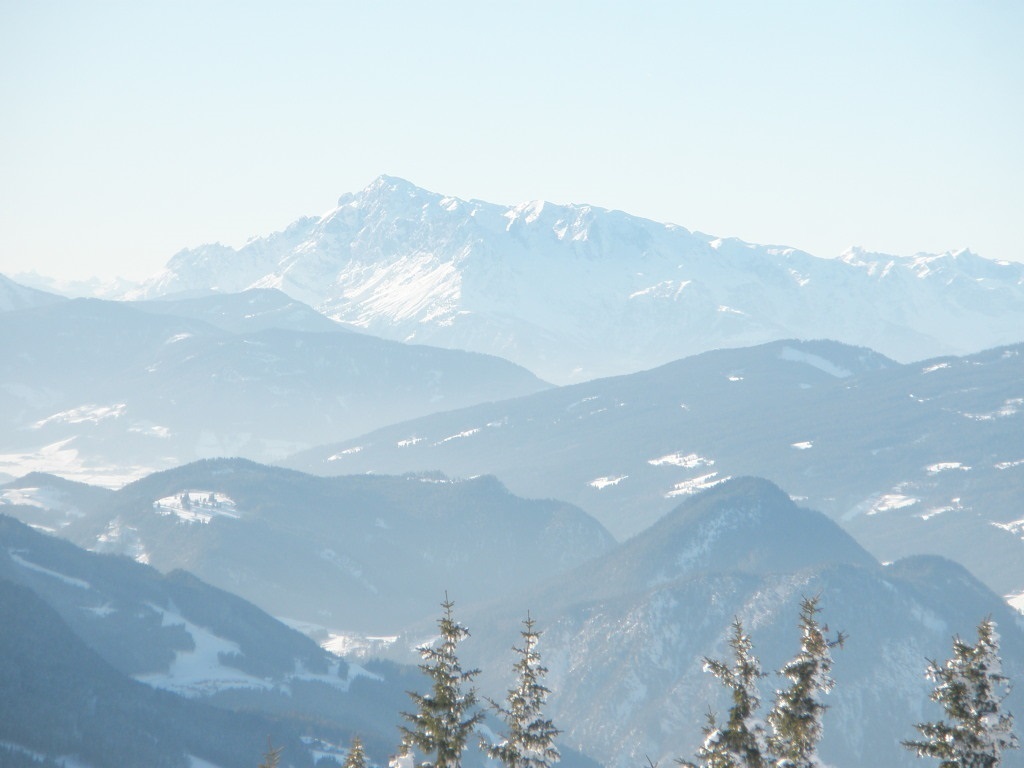 According to new evidence, the cure for acne is all around us. It is touching your skin at this very moment. Your room is full of it and unquantifiable amounts can be found right outside your front door.
According to new evidence, the cure for acne is all around us. It is touching your skin at this very moment. Your room is full of it and unquantifiable amounts can be found right outside your front door.
You don’t need benzoyl peroxide to cure acne. You don’t need oral antibiotics. You definitely don’t need accutane.
No, if the avalanche of new theories is true, all you need is a substance Mercury has, something the Martians have, something even the icy plains of Pluto have in a faint glimmer: 100% natural blue light.
The evidence is strong
When you consider the blue light theory for a moment, it’s nothing extraordinary at all. Countless people have noticed clearer skin than normal after a day of fun at the beach, or climbing a high mountain. It might have been due to sea salt, relaxation or exercise, but there’s a clear connection between sunlight and acne.
Two known aspects are the generation of vitamin D and vasodilating nitric oxide as UV radiation hits your skin. But could the blue light portion of sunlight, generated by computer screens and any visible light source, also improve acne?
According to this 2009 study the answer is yes. 18 females and 3 males were gathered; the mean age was 15. Their acne was long-lasting, with a mean duration of 13.1 years among the 19 subjects who had it.
Read Annihilate Your Acne – learn how to clear your skin permanently
Over eight weeks, the subjects underwent daily self-applied blue light therapy using a special machine. Both acne papules and pustules were tested. These are two different but common forms of acne; you probably see each in the mirror every day. A simple differentiation is that papules are red, hard and inflamed while pustules are burstable without being whiteheads (hence pustule).
Anyway, the blue light therapy reduced total papules by 21.8% after 1 week, 41.03% after 4 weeks, and 35.64% after 8 weeks. Pustules were reduced by a small amount. Blackhead levels also fell significantly, by 41.5% after 1 week and 50% after 4 weeks. Whiteheads fell but by slightly less: a 30.4% reduction after 1 week.
Acne wasn’t the only skin condition affected by the blue light. Total skin irritation decreased slightly by the end of the study. The subjects also had a light flakiness and dryness at the study’s outset and this symptom improved significantly after the eight weeks.
Additionally, the patients weren’t strapped down and analysed against their will by data-hungry scientists. They provided their own detailed opinions and most concluded that their skin become more appealing. They could have been overoptimistic, but the scientists agreed with them.
Neither side effects nor allergies were reported. The one strange aspect is how each form of acne began to increase again after 8 weeks, but other studies have not observed this.
The mechanism – death to bacteria
All in all, the prospects are good for blue light so far, but how does it function? Antibacterial properties are the main confirmed factor.
Light which is visible to the naked eye is in the wavelength of 400nm to 700nm. At the bottom end of the scale is violet and blue light, and towards the 700nm mark is red light. The colours of a rainbow are the ultimate illustration.
One of the characteristics of p.acnes bacteria is light sensitive chemicals called porphyrins in its outer membrane. Human skin does not manufacture porphyrins by itself, but acne-prone skin has higher levels due to it being manufactured by excessive p.acnes levels.
When p.acnes bacteria is exposed to visible light of wavelengths between 407nm and 420nm, the porphyrins vibrate in sync with the energy and destabilise the cell membrane in which they reside. Important minerals like potassium and phosphate leak from the bacteria, while bursts of free radicals are generated.
Uncontrollable leakage of cytoplasm and other contents begins, leaving the bacteria totally dead within 48 hours. The effects are rapid: p.acnes activity can decrease by up to 15% immediately and 24% in 60 minutes. It is a sorry fate for p.acnes, but not one which millions of teenagers will sympathise with.
Recommended – 6 vitamins and minerals which could finally clear your acne
All this can occur with blue light from the sun or a specialised machine. In a petri dish, intense blue light can kill 99.9% of p.acnes bacteria it comes into contact with. In real human skin, the waves have to penetrate through the skin cells but remain effective. Blue light can inhibit multiple p.acnes strains, not just one isolated variety.
In a stroke of luck, p.acnes bacteria is particularly vulnerable to blue light while staphylococcus epidermis, another strain of skin bacteria, is fully resistant. Red light and white light have also been tested against p.acnes, but tend to fail despite their deeper penetration powers.
Better yet, no resistance has ever been observed. With the oral and topical antibiotic free for all taking place today (discover the dangers here), p.acnes has managed to mutate and become resistant to them. Among other bacteria, no such adaption has been detected to blue light, not even after constant exposure repeated 10 and 20 times over.
No mutant strains with additional blue light damage-repairing enzymes have ever been observed. In fact, blue light was tested partially as a response to antibiotic resistant p.acnes in the first place.
Killing p.acnes will achieve one great thing: reduced inflammation. P. acnes is far from the only cause of acne but it 1) triggers an immune system assault on the skin pores where it lurks, and 2) produces inflammatory by-products and metabolites itself. Low levels are perfectly natural but acne patients have a p.acnes overgrowth.
Speculation
 So there’s your answer. That said, it’s mysterious that blackheads were inhibited so superbly, since p.acnes has little to do with them. P.acnes is responsible for swelling the pore and creating pimples, but blackheads are just a clogged pore which has oxidised to become black (to simplify it).
So there’s your answer. That said, it’s mysterious that blackheads were inhibited so superbly, since p.acnes has little to do with them. P.acnes is responsible for swelling the pore and creating pimples, but blackheads are just a clogged pore which has oxidised to become black (to simplify it).
Blue light may have other roles, and it makes sense that it would, given that we’re adapted to be exposed to sunlight frequently during the day. Inflammation is one; narrow band blue light can inhibit the pro-inflammatory chemical interleukin-1alpha in human skin cells. A blue light combination with UV radiation, so effectively sunlight, inhibits IL-1a even more effectively, with a synergistic effect. Literally dozens of other pro-inflammatory chemicals have been linked to acne, but this is still promising.
7 natural topical treatments which can massively reduce acne
Then there’s the mood benefits. Blue light is able to strengthen the connection between areas of the brain involved with emotion and language. Blue light also directly increases serotonin levels for some reason. It does so more effectively than green light and white light. Therefore, simple blue light can help acne by keeping stress levels low.
There is much that we don’t know about this most natural of substances. Who would have guessed at the porphyrin, bacterial self-destruction mechanism back in the mediaeval era, or even twenty years ago?
What are the types of blue light treatments?
One – office blue light. If you put the fate of your skin in the hands of a blue light professional, you’ll receive a much more intense treatment where you have to wear protective goggles. You will typically undergo eight sessions over the course of 4 weeks, taking 15 to 30 minutes per session. The cost is $40 per session on average.
The problem is that with the intensity comes extra side effects like stinging and redness. There’s also an even more intense treatment called photodynamic therapy where a photosensitising agent like methyl aminolevulinate is applied to the skin beforehand, but this has more intense side effects as well.
Two – at home. The do it yourself method is confirmed to be successful, since in our promising study above the blue light was self-applied. Home blue light devices have are less intense but this also produces less side effects like irritation and peeling (none were observed in the study).
First there’s table top blue light machines. You situate them on your desk and expose your face for 10 to 15 minutes daily, keeping your face in close contact to the light. Secondly, you can buy a light mask which blasts your face as you wear it.
The most convenient option is handheld devices. With these you can be more specific; if only your cheek or forehead is spotty, you can attack that in isolation. Full facial application takes as low as 16 minutes in products like Baby Quasar MD Blue, to 30 minutes in other products, but again, that’s for your entire face. If you only need to blast your nose then handheld devices can take just 5 minutes to use. It’s also claimed that handheld devices penetrate through the skin’s layers more effectively, and curtail deeper, more cunning strains of p.acnes.
Reviewed – the best home blue light devices for acne
These machines are pricy, costing $200 to $350. On the other hand, you don’t have to make repeated $40 visits to a clinic and the device is yours. For example, Baby Quasar MD Blue is sturdy enough to last for 200 years if the manufacturer is accurate. Blue light, red light, or blue/red combinations are available. New products are emerging constantly; this is far from a dead market.
Three – the sky. Finally, there’s the sun. The original source of blue light since time began. In the olden days of roaming a fully forested Europe alongside woolly mammoths, cave bears and (sadly extinct) woolly rhinos, the sun was our only source of blue light aside from weak reflection from the moon. At night, there was exposure to red light in the form of forest fires, local fires for warmth, or even volcanic eruptions, but not blue light.
If human skin is adapted to need blue light, the sun should be enough to obtain it. What’s guaranteed is that the intensity will be lower than the specialised machines above, unless of course you get tricked into booking a holiday to Venus or Mercury.
What about red light?
 Red light or red/blue light combined therapy is also gaining popularity although nowhere close to the extent of blue light. Red light has a significantly longer wavelength, at approximately 650nm on average, which blesses it with much deeper penetration into the skin’s layers.
Red light or red/blue light combined therapy is also gaining popularity although nowhere close to the extent of blue light. Red light has a significantly longer wavelength, at approximately 650nm on average, which blesses it with much deeper penetration into the skin’s layers.
Red light lacks the antibacterial properties of blue light, because it is only weakly active on porphyrins. What red light can do is reduce inflammation levels in the skin. It can reduce pro-inflammatory cytokines generated by human skin cells, and accomplish this in deeper skin cells where inflammation begins.
With its deep penetration powers through the skin’s layers comes another power as well – heating and shrinking the sebaceous glands. Red light can reduce your sebum production and clogged pores, UNLESS the intensity is too high, in which case your inner layers of skin will dry out and sebum production will shoot up.
These completely different powers are why blue and red combined therapies are gaining prominence; to gain the best of both worlds. Most studies have tested the combination, but one study on isolated red light observed a 66% decrease in inflammatory acne and 59% decrease in non-inflammatory acne.
So is blue light recommended?
The basic answer is possibly. It’s a great treatment and the excellent studies cannot be denied, but you shouldn’t drop all dietary strategies in order to “see the light”.
As far as industrial high-tech, modern products go, blue light is quite possibly the best. The philosophy of this website is stay away from completely unnatural products, like Accutane and benzoyl peroxide, but blue light is simply a hyper concentrated extension of an already natural substance. There are no Accutane trees growing in the rainforests but blue light is everywhere.
But on the other hand, blue light is not a cure for acne, just like raw honey is not a cure, as brilliant as it is. You have to cure acne from inside the body. Blue light is effectively another topical treatment, which treats the symptom rather than the causes, such as rampaging hormones and nutritional deficiencies. Murdering p.acnes is not enough; you have to rob it of the comfy environment which it so desperately needs to thrive – clogged skin pores.
Even within those topical powers (which I still support), it only treats the specific problem of p.acnes bacteria. P.acnes (and p. granulosum to a much lesser extent) triggers inflammation, but so does squalene peroxide, a toxic compound which forms when intact sebum is assaulted by free radicals. To end squalene oxidation you need antioxidants such as vitamin E. Blue light has just one main power.
Then there’s the question of money. For most people 250 dollars is way too much. If blue light was a guaranteed way to make your acne history, you might consider it, but if it doesn’t tackle the root causes, then not so much.
Consider the scenario: you attend your local clinic for a one month, intensive blue light session. Looking in a mirror as you leave for the final time, you smile as your skin is healthier than it’s been for five years.
Why aloe vera is the nemesis of red and inflamed acne
Within just minutes though, p.acnes begins its long quest to recolonise your skin pores. No hormonal imbalances have been removed, your pores remained clogged. Only the pre-existing p.acnes has been destroyed by their own porphyrins; no antibacterial compounds linger in the pores.
Within weeks, acne regains its grip, and you are faced with another visit to the clinic or an entirely different strategy, not to mention a lot of wasted money.
The promise of a 41% reduction in acne should not make you ignore the real insidious culprit, an unnatural diet and lifestyle…
…but despite those flaws, it can’t be denied that blue light is an excellent weapon if you have the cash on hand. It might sound like blue light is a terrible treatment from the arguments above, but in reality, it’s superb for what it is. If you’re a newcomer to this website, you just need the message that you have treat acne from within.
Firstly then, blue light is a great incentive to get the sunlight exposure you need. Secondly, both home and office blue light will work as a more intense treatment, but I would recommend the homemade version, simply because it’s a onetime purchase. The office treatments are more concentrated and powerful, but a month long session costs roughly equal to buying your own home laser or tabletop zapper.
Once the benefits have worn off and p.acnes has crept back in, you’ll have to return to the clinic, with the owners rubbing their hands in glee. Both are costly, but home blue light is an investment.
The top products
 With the judgement over and done with, which blue light product should you buy? There’s countless out there, and luckily, a large amount of decent ones. You can read about them all here, but these four are the most effective for acne in their respective price ranges. I can’t list the exact prices here due to occasional fluctuation, but they vary from $100-$600.
With the judgement over and done with, which blue light product should you buy? There’s countless out there, and luckily, a large amount of decent ones. You can read about them all here, but these four are the most effective for acne in their respective price ranges. I can’t list the exact prices here due to occasional fluctuation, but they vary from $100-$600.
Baby Quasar MD Blue – the ultimate handheld device. In the high price range. Contains blue light in the optimal wavelength of 415nm to 420nm. Highly intense and durable; supposedly lasts for hundreds of years.
Baby Quasar Clear Rayz – the top moderately priced handheld device. Less intense than MD Blue, as you’d expect, but it’s wavelength is equal and thus equally perfect. Also contains a red light function, which you can activate with the touch of a button.
Trophy MD Blue – the ultimate desktop device. Highly intense, easy to use, and unlike some other desktop devices, contains the optimal 415nm wavelength, which is why it wins. Submerge your whole face in the light and wait; don’t forget to wear the prepackaged goggles. In the mid-tier price range.
Tanda Clear Plus – a proven product which is the perfect lower priced handheld. It contains the right wavelength again and is actually more intense than some higher priced products. Tanda Clear Plus was actually the product used in the excellent study earlier in this article.
Other blue light devices will work well and more will be invented in the future, but as of today (2017), these are best.
More secrets of sunlight
Don’t forget the other benefits of sunlight for acne either! For millions of years, the sun has kept us alive, warming us and providing alertness during the daytime, but now mainstream dermatology has given it a terrible reputation. Yes, skin cancer is a problem, but we depend on sunlight for many functions, not just the blue light:
Vitamin D – eggs and mushrooms are bonus sources; we are designed to obtain vitamin D from a reaction induced in our skin when exposed to UV radiation. Vitamin D has countless functions related to acne: producing superoxide dismutase, maintaining insulin sensitivity, and suppressing pro-inflammatory cytokine formation.
Deficiency is a big cause of dead and lifeless skin, and a serious cause of winter acne in high latitude countries.
Nitric oxide – less known than the above, UV radiation also stimulates a burst of nitric oxide the second it hits your skin. NO is a vasodilating gas which is ordinarily superb for blood flow and skin tone. At the skin’s surface it becomes even better, since nitric oxide is a powerful antibacterial agent, including against p.acnes.
Endorphins – the sunlight high is partly caused by an increase in natural opioids called beta-endorphins in your blood. The increase can be 44% in humans, according to one study. It might be nature’s way of encouraging us to get in the sun, to obtain the two benefits above.
Say no to the vampire mentality, unless of course you’re a pale, cloaked fellow reading this from a castle in Transylvania.
You can also increase your resistance to mutations and free radical damage from sunlight naturally, through your diet. Then there’s tamanu oil and castor oil, two promising topical solutions.
Conclusion
We’ve already said what needs to be said, so finally, remember that blue light isn’t completely pure and good. It’s only our ally in the daytime, at night it can be a serious villain, when it’s being emitted from computer screens, tablets and streetlights.
Excessive blue light is responsible for the epidemic of sleep deprivation in our artificial environment, which in turn is to blame for the epidemic of acne. So whatever strategy you choose, restrict your artificial blue night exposure to before six o clock.
In the future there will be a more detailed article on different blue light products here (update 8/7/17: here it is, the best blue light devices for acne). All the products for sale are very interesting, with different light blasting techniques, varying wavelengths, sometimes incorporating multiple colours at the same time. As a placeholder product for any fabulously wealthy readers, here’s a handheld blue light device, with an optimal wavelength for killing p.acnes, of 415nm to 420nm.
If you enjoy rolling up 100 dollar notes and smoking them, lighting a winter fireplace with money, or are so rich you can afford a secret hideout in a volcano, then Baby Quasar MD Blue Skincare Therapy Device is unbeatable.
NEXT: forget creams and moisturisers – discover the ultimate acne-clearing diet
Thanks for reading!

Does your e-book contain sources cited? Like studies?
No it does not contain actual citations nor a bibliography, but it is based largely off studies, similarly to how these articles are.
What about using an LED light that’s meant for plants?
https://www.amazon.com/gp/aw/d/B01ID6A1MO/ref=mp_s_a_1_5?ie=UTF8&qid=1500915568&sr=8-5&pi=AC_SX236_SY340_FMwebp_QL65&keywords=plant+grow+light&dpPl=1&dpID=41ubmSyS-%2BL&ref=plSrch
Interesting question. Theoretically it might work well, because plants receive the exact same blue light as we do, from the sun, but the problem is that they won’t be tailored towards acne. You have to have a specific intensity and wavelength. The product you linked to is very poor, because the wavelength is far too high and there’s only two blue LED bulbs. If you find a plant blue light device which happens to be optimal for acne as well then you can use it, but you probably won’t find one.
I don’t have a question just wanted to say you are a genius!!! My dermatologist is a retard, thanks so much for all you do
Is it a good sign if our face feels extremely dry after exposing it to sunlight for 10 minutes or so? I hope it won’t lead to wrinkles or premature aging in the long term.